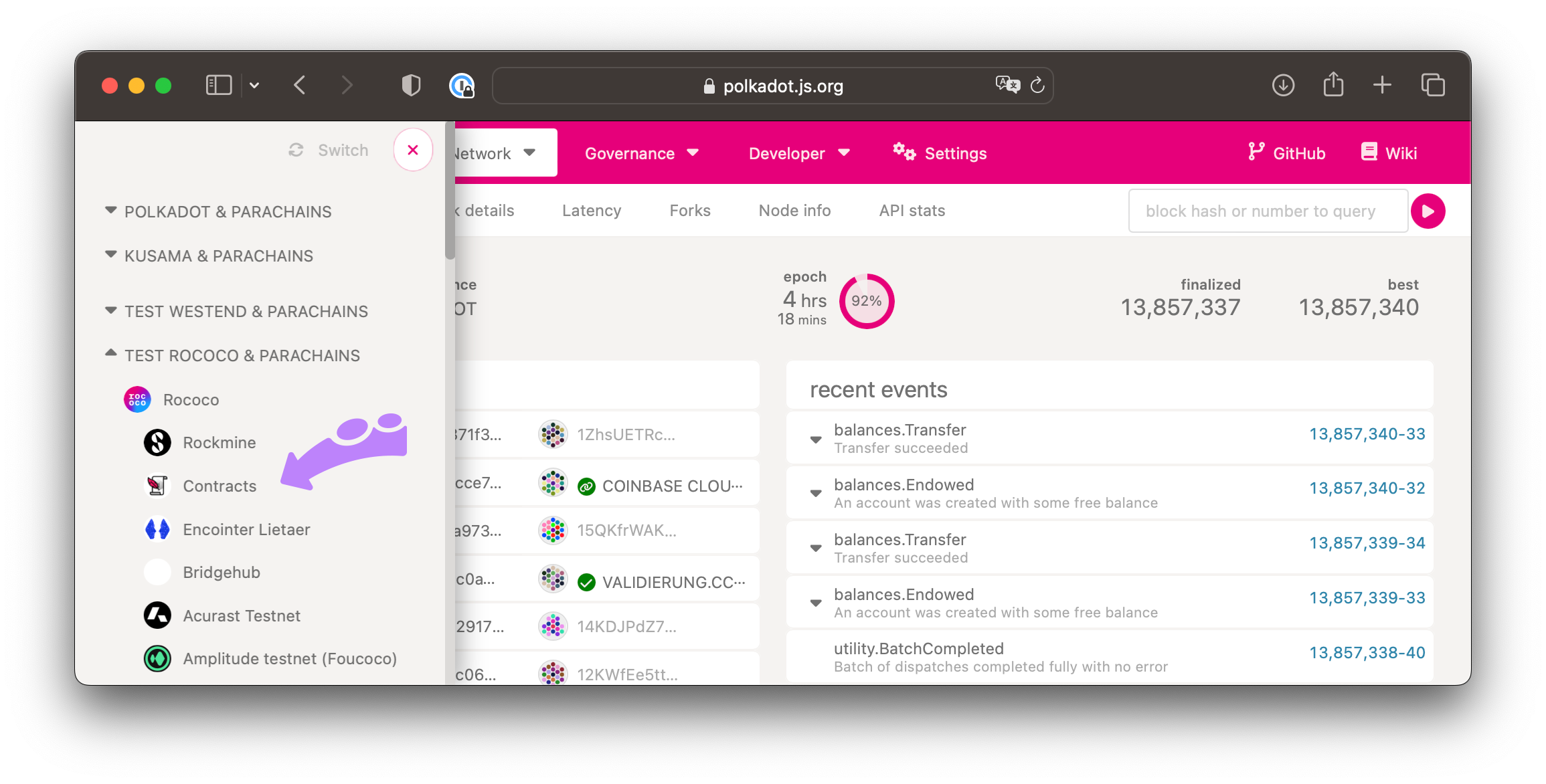Rococo Deployment
We have a live testnet named Contracts as a parachain on Rococo ‒
a testnet for Polkadot and Kusama parachains:

You can interact with the network through Polkadot JS Apps,
click here for a direct link to the Contracts parachain.
Our parachain uses the Rococo relay chain's native token (ROC) instead of having its own token. Due to this you'll need ROC in order to deploy contracts on our testnet.
As a first step, you should create an account. See here for a detailed guide.
As a second step, you have to get ROC testnet tokens through the Rococo Faucet. This is a chat room in which you need to write:
!drip YOUR_SS_58_ADDRESS:1002
The number 1002 is the parachain id of Contracts on Rococo, by supplying it the faucet will teleport ROC
tokens directly to your account on the parachain.
If everything worked out, the teleported ROC tokens will show up under
the "Accounts" tab for Contracts.
Once you have ROC on Contracts you can deploy a contract as you would normally.
If you're unsure about this, our guided tutorial
will clarify that for you in no time.
What is the Contracts parachain?
It's a Substrate
parachain for smart contracts.
We configured it to use Substrate's smart contracts module ‒ the
contracts pallet ‒ in
a default configuration.
The code for this parachain can be found in the cumulus repository.
The pallet-contracts takes smart contracts as WebAssembly blobs and defines an API
for everything a smart contract needs (storage access, …).
As long as a programming language compiles to WebAssembly and there exists an implementation
of this API in it, you can write a smart contract for this pallet ‒ and thus for our the Contracts
parachain ‒ in that language.
This is a list of languages you can currently choose from:
- Polkadot's ink! for Rust
- ask! for Assembly Script
- The Solang compiler for Solidity
The following graphic depicts the idea:

There are also different user interfaces and command-line tools you can use to deploy or interact with contracts: